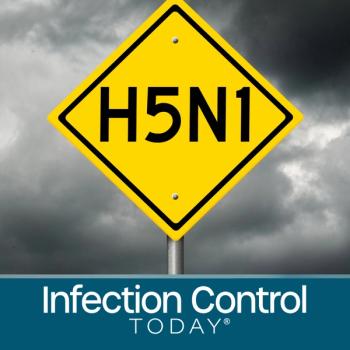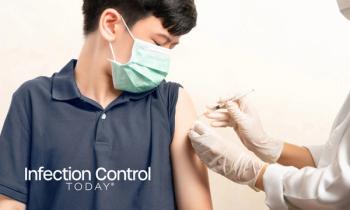
Viewpoint: Despite Happy Talk, We’re Far From Out of the COVID Woods
COVID-19 cases in many states have risen and the false narrative is that this is because of increased testing. But the rise in cases far outstrips the rise in testing.
The coronavirus disease 2019 (COVID-19) epidemic has continued to spread with infections spiking in the southern States. Marked increases are seen in the states of Oklahoma, South Carolina, Arizona, Texas, and Florida. Over a two-week period, in Arizona, cases per day increased from 700 cases to over 3000, in Florida from approximately 800 to over 3000, and in Texas from 1545 to 3961. The false narrative that this is because the United States has increased testing is being spread in an attempt to mitigate these numbers. But the rise in cases far outstrips the rise in testing. And increased testing does not over the course of weeks increase COVID-19 case numbers; testing identifies and then through case-tracking and self-isolation results in decreased cases. This is how one stops an epidemic. Many countries are currently testing less than the United States, simply because their infection rates have
fallen and less tests for case-tracking are required.
The European Union has approximately the same population as the United States and the number of daily Sars-CoV-2 cases between the two is telling. Cases per day in both peaked at over 30,000. In the EU, they have fallen to a low level of 4000 per day, but in the United States they are rising, up to 24,000 and recently to over 30,000.
The narrative that the infection will burnout especially with the high rate of asymptomatic carriers is not supported by data. Recent observations in California1 and Sweden2 found lower than expected antibody levels in their populations. A recent study published in the Journal of Nature Medicine3 found that at eight weeks after discharge from a hospital, IgG coronavirus antibodies levels were decreased, with 40% of individuals who had asymptomatic infections and 13% of individuals who had symptomatic infections becoming seronegative.
The narrative that this peak in viral activity is not of concern since death rates are still falling is also misleading for three reasons. First, this new peak is being driven by a younger age group of patients as they attend bars, beaches, and college parties. They are less likely to have a fatal outcome with COVID-19 but can still easily spread the virus to their parents and grandparents. Second, deaths are a lagging indicator and may occur weeks after a positive test or symptoms develop. Finally, we now know how to better manage COVID-19 patients, including the proning of respirator-dependent patients, treating the common and deadly coagulopathies with anticoagulation, along with the use of dexamethasone, remdesivir and antibody containing serum.
Thus, death rates would be expected to fall, the best metric of this pandemic would be hospitalizations. Unfortunately, the impact of his epidemic is being mitigated by referring to patients who are discharged from the hospital as “recovered” in actuality, many are far from recovered, but merely have survived the acute viral episode.
Lasting effects of COVID-19 are all too common in patients who have been hospitalized. Unlike the flu, Sars-CoV-2 can affect almost every organ in the body. Up to 20% will develop heart damage4. COVID-19 patients are complaining of chronic fatigue5. In past SARs infections, 27% of hospitalized patients met the CDC criteria for chronic fatigue syndrome6. If a patient requires respiratory support, either oxygen administration or ventilation, pulmonary fibrosis and disability will be very common. Renal insufficiency can occur in up to a third of ICU patients. The hypercoagulability caused by the virus can cause strokes in the young7 and in children, the virus can be associated with a delayed inflammatory response, multisystem inflammatory syndrome.8
Thus, the young are not shielded from the viruses’ devastating effects. We need to take this pandemic seriously, the public needs to wear masks and practice social distancing. As stated by Avindra Nath, MD, the senior investigator at the Section of Infections of the Nervous System at National Institutes of Health: “It’s quite possible some will never get their health back.”5
References:
(1) Lin RG. A coronavirus mystery: How many people in L.A. actually have COVID-19? Los Angeles Times. June 5, 2020.
(2) Kennedy N. Sweden is still nowhere near 'herd immunity,' even though it didn't go into lockdown. CNN. May 21, 2020.
(3) Long QX, Tang XJ, Shi QL, et al. Clinical and immunological assessment of asymptomatic SARS-CoV-2 infections. Nature Medicine. June 18, 2020.
(4) Shi S. Qin M, Shen B. Association of Cardiac Injury With Mortality in Hospitalized Patients With COVID-19 in Wuhan, China. JAMA Network. March 25, 2020.
(5) Vastag B. Mazur B. Researchers warn covid-19 could cause debilitating long-term illness in some patients. Washington Post. May 30, 2020.
(6) Lam MHB, Wing YK, Yu MWM. Mental Morbidities and Chronic Fatigue in Severe Acute Respiratory Syndrome SurvivorsLong-term Follow-up. JAMA Network. Dec. 14, 2009.
(7) Doctors consider possible stroke and COVID-19 connection. American Heart Association News. May 12, 2020.
(8) Centers for Disease Control and Resistance. May 29, 2020.
Newsletter
Stay prepared and protected with Infection Control Today's newsletter, delivering essential updates, best practices, and expert insights for infection preventionists.






